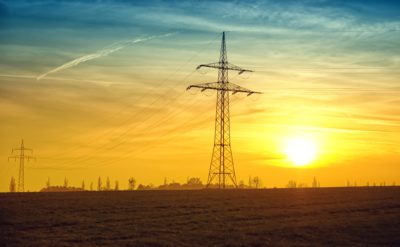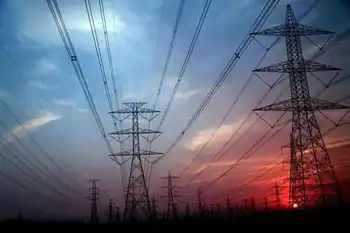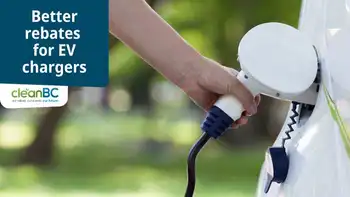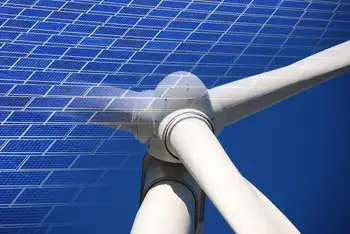Solar battery recharging center creates carbon neutral farm
The solar power centre, built by Cellstrom, is a shed-sized box with 24 high-tech solar panels on the roof, housing a revolutionary liquid-based battery. The battery has an efficiency of up to 80%, which is improved for variable loads, and when it is in standby it is improved by utilizing a cascaded architecture and disconnectable inverter. The electrolyte alone has a very low self-discharge rate of 1% per year, and it can be used almost indefinitely.
Although charging is an endothermic process, the battery can be immediately recharged at high power — during which time the system can be cooled, even after a strenuous discharge. A cycle stability of more than 10,000 charge/discharges can be obtained by extracting 85% of the total capacity.
The lifetime of a battery lies between 10 and 20 years. The charging state and the consequent amount of the remaining energy of the battery can be measured exactly. Precise calculation of the remaining capacity enables maximum utilization of the energy that has been stored. A high supply security is guaranteed by remote observation of the state of charge, and the built-in controller can monitor every safety-critical parameter. In case of a breakdown, an alarm signal would be automatically sent to the central service centre. Utilizing the same channel, it is possible to conduct remote diagnoses and monitoring.
The new technology makes it possible to store solar energy for the first time. At present, electricity generated by the sun has to be used immediately. Depending on the amount of usage, the Cellstrom battery centre under construction in Monte Vibiano Vecchio can store solar-sourced electricity for up to three days. The Austrian company is working to extend such usage to 10 days or even more, enabling the overall agricultural activities within the property to continue operating also without sunlight.
It means that golf carts and electric bikes, already used inside the property, will become the first means of transport for farm workers, and workers will be able to charge up their vehicles at the battery centre.
The project is part of an experiment to cut the carbon-dioxide (CO2) emissions on the farm to zero starting in 2009. New renewables technologies have been installed and applied to the property, including electric vehicles, miniature tractors using a new generation of biofuels, boilers used to create heat in the olive oil production process, wood chips instead of methane gas, a plantation of 10,000 trees to soak up and offset any unforeseen CO2 emissions, and sun-reflecting paint on storage buildings and tanks to cut the effects of global warming.
Key investments have been made by the property's owners, and they are expected to turn into profit in about five years, said Lorenzo Fasola Bologna, Vibiano Vecchio's Chef Executive Officer. The total cost of ownership, calculated over the lifetime of the flow battery, is comparatively small. Cellstrom estimates that the farm will be able to save up to 4,500 litres of petrol per year and decrease CO2 emissions by 10 tons.
Cellstrom, founded in 2000, sells solutions for its revolutionary FB10/100 energy storage system, a vanadium redox flow battery associated with power electronics in weatherproof housing. The battery, suitable for use with renewable energy sources, is manufactured at one of the two Cellstrom sites near Vienna in Brunn am Gebirge, where the company's production and sales are based. The vanadium redox flow battery is technologically an optimum mixture of environmental acceptability, performance, lifetime, energy density and robustness.
A solar battery is designed for use with an off-grid photovoltaic installation, including at least a photovoltaic panel, battery charger, solar battery and load. If the load requires an alternating current source, an inverter will also be required to transform the battery's direct current. In practice, a diesel generator, wind turbine or fuel cell may also be added.
To date, the term "solar battery" refers almost exclusively to lead-acid batteries designed for this purpose, although nickel-cadmium batteries can be also used in some cases.
Related News

The Collapse of Electric Airplane Startup Eviation
NEW YORK - The electric aviation industry was poised to revolutionize the skies, with startups like Eviation Aircraft leading the charge to bring environmentally friendly, cost-efficient electric airplanes into commercial use. However, in a shocking turn of events, Eviation has faced an abrupt collapse, signaling challenges that may impact the future of electric flight.
Eviation’s Vision and Early Promise
Founded in 2015, Eviation was an ambitious electric airplane startup with the goal of changing the way the world thinks about aviation. The company’s flagship product, the Alice aircraft, was designed to be an all-electric regional airliner capable of carrying up…





